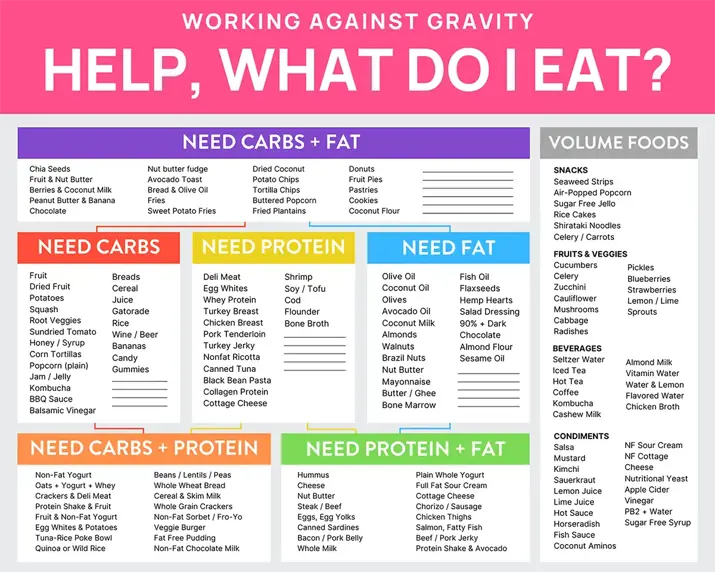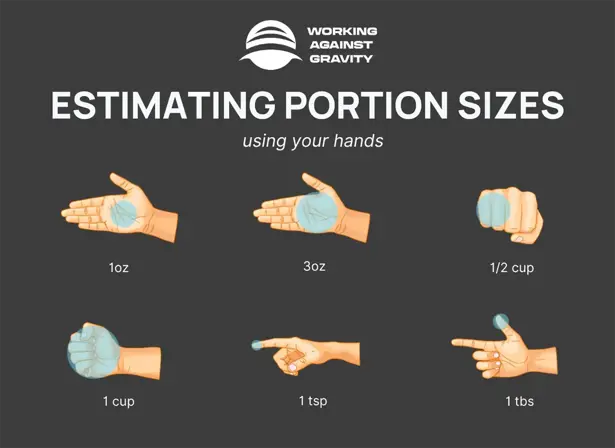Whether you prefer flexible dieting, keto, paleo, plant-based or another style of eating, counting macronutrients (macros) is an excellent tool to assess the proper ratio of fats, carbs and protein your body needs to reach your specific goals.
We’ve helped thousands of people make macro counting work for them and one thing we know is that it can be challenging at times (especially when you’re just getting started).
That’s why we’re sharing our top 17 tips and tricks to help you track macros as simply as possible. After all, the simpler things are, the more sustainable (and enjoyable!) they’ll feel. This is the trick to ultimate success.
Don’t get me wrong—lasting change WILL require work and effort, but it can be done and you don’t need to do it alone. At WAG, we know that it isn’t necessary to reinvent the wheel to make an impact. We’re here to share what’s worked for thousands of our clients so you can give them a shot too.
Using these tips and tricks can directly translate into progress toward your goals.
Advertisement
1. Have single-source macros on hand.
Single-source macro is a term we use for foods that have primarily only one of the three macros: protein, carbs or fats. Having a list of foods to choose from when you have mainly one macro you need to fill is extremely helpful, will help keep things simple and can be a great tool for beginners and for overcoming weight loss plateaus.

2. Never grocery shop hungry.
This is the oldest trick in the book for a reason! Having a meal or snack before hitting the store can be a game changer when it comes to sticking to your grocery list. Here are some of our favorite grocery lists that might give you some inspiration.
- Macro-Friendly Shopping at Whole Foods
- Shopping at Costco
- Shopping at Trader Joe’s
- Shopping at Von’s/Albertsons
3. Set your environment up for success.
The truth is, that willpower is finite and takes focus. Imagine what we all could accomplish if our energy wasn’t being wasted on fighting temptations multiple times a day. Here are a few ways you can set your environment up for success:
- Do a kitchen overhaul, including completely removing trigger foods or keeping them off the counters and away from the front of the fridge. The more work it takes to access tempting foods, the less likely you will be to have them.
- Shop for success. Head to the store with a plan, shop the exterior of the store, and have a meal beforehand so that you aren’t shopping hungry.
- Practice mindful eating by eating slowly, removing distractions, and savoring the experience with your food.
Looking for more ways to make your environments work for you? Check out the WAG 7-Day Environmental Overhaul!
Advertisement
4. Use sticky notes as you cook.
Using your phone while you cook can be a pain, so write the ingredients and weights on a sticky note, and you can input them all in MyFitnessPal later!
5. Take advantage of the tare/zero button.
Hit it to subtract the weight of your bowl after adding ingredients, so you don’t have to use separate bowls (or unnecessary math!). Here’s a video demonstrating how to use it in case you never have.
6. Divide your macros over the course of the day.
If the amount of food you plan to eat each day feels overwhelming, divide it evenly through your meals. For example, if you are planning to eat four times a day and your protein goal is 130 grams for the day, you can aim for about 30–33 grams of protein per meal. You can do the same by dividing carbs and fats, and by doing this you’ll have a general framework to plan out your meals for the day.
7. Use masking tape.
Keep track of serving sizes by adding masking tape to your containers. For example, if you cooked a casserole and know that one serving is 150 grams, then write it on the tape and stick it on the container! It can also be super helpful for cooked meat or veggies. For example, if you cook 12 ounces of raw chicken breast and the after-cooked weight is 10 ounces, then 12/10 = 1.2, so when you enter the raw chicken into MyFitnessPal as 4 ounces of raw chicken, you divide that by 1.2 and get 3.3, so you know that 3.3 ounces is the amount of cooked meat you should weigh out. Adding the multiplier to the container can also be helpful for starchy veggies or grains like rice, quinoa or oatmeal.
8. Fill yourself up.
If you’re struggling with hunger, try eating fewer larger meals and instead eat smaller, more frequent ones to achieve a genuine sense of fullness.
Advertisement
9. Get to know your go-to to-go foods.
Find a few “go-to” meals closest to the three places you spend the most time (your “food radius”—often work, school, gym and/or home), so you’re never without a backup plan when you need to grab something in a pinch.
You can look at menus ahead of time for different types of restaurants. For example, if you are heading to a Mexican restaurant you could opt for tacos or fajitas and estimate each ingredient, rather than trying to find nutrition facts that fit your entire meal. Each time you go, you will only need to pick from two or three options instead of feeling overwhelmed by the entire menu!
You could also try taking your favorite meals to go and weighing out the ingredients at home. That way, the next time you eat that particular meal, you have a more accurate estimate of the macros ready to go in your tracking app.
10. Save your meals to your tracking app.
Plan one day that fits your macros, then recreate those meals by copy-and-pasting to the next day rather than having to reenter it or guess what portions work best. This tutorial can teach you how to save your favorite meals in MyFitnessPal and save you time in tracking each time you want to enjoy them!
11. Have one meal each day that you can easily manipulate.
Deli turkey wraps, chicken soft tacos, salads, etc. Add more meat for more protein, more avocado/mayo/guac for more fat, more veggies/shells or a side for more carbs.
Advertisement
12. Get your hotel set up before checking in.
When traveling, call ahead to hotels and request a mini-fridge and a microwave to have more variety for snacks or meals.
You’ll also be surprised at what you can make with the coffee pot and even ironing board in your hotel room. Here are some ideas!
13. Become a pro at estimating.
Practice guessing what your food weighs before putting it on the scale to build confidence in estimating. Estimating is just like any other skill; it takes time and practice. Check out this hand portion guide to become more confident in your estimating skills when you might not have access to a scale.

14. Double-check nutrition labels.
When scanning entries into MyFitnessPal, make sure the entry matches the nutrition listed on the package and verify the serving size. Packaging can change and serving sizes can be sneaky!
Advertisement
15. Customize your tracking app.
Make sure your food diary reflects the way YOU eat. Change the number of meals your food diary has and change the meal labels to reflect your day of eating.
16. Don’t drink your calories.
If hunger is an issue, try not to drink your macros (ex.: protein shakes, coconut water, kombucha, juice, etc.). Volume (and chewing and swallowing your food) will almost always be more satisfying. Some of our favorite high-volume foods (that also come with fiber!) are spinach, leafy greens, cucumber, radishes, broccoli, cauliflower, asparagus, mushrooms, peppers, zucchini, spaghetti squash and celery.
17. Stay hydrated.
Drink lots of water as you eat and throughout the day. Water is an essential ingredient to ensuring our bodies continue to function properly. It has an incredible impact on our performance, mood, energy and progress. To allow us to be able to perform at our peak, it’s important that we pay attention to our intake and remain adequately hydrated throughout the day.
Aim for 1 oz per pound of body weight and track your fluid intake—most people overestimate this and a tracking app can be a helpful way to make sure you are drinking enough. Some of our go-tos are: Plant Nanny, Water Logged and My Water Balance.
Hopefully, these tricks will help you get started or stay on track toward your goals! Whether you take BIG or small steps, all that matters is that you’re moving forward.
Advertisement
Ready to start working with a personal nutrition coach right away?






